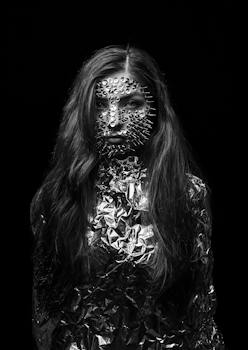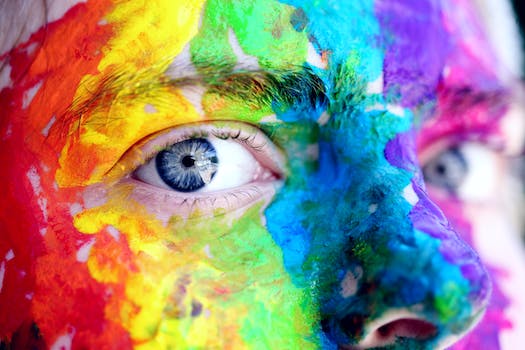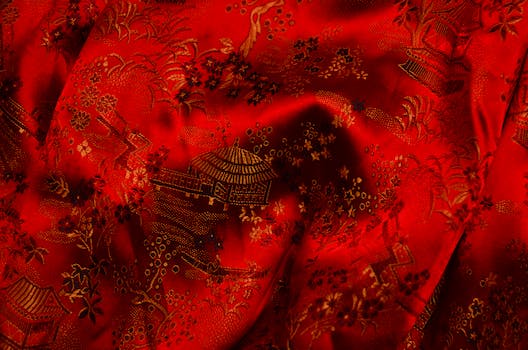

-
Table of Contents
Unleash your inner fears with The Babadook (2014): Unveiling the Horror Within.
Introduction
"The Babadook" is a 2014 Australian psychological horror film directed by Jennifer Kent. The film follows the story of a single mother, Amelia, and her young son, Samuel, as they are haunted by a mysterious creature called the Babadook. As the story unfolds, it becomes clear that the Babadook represents the manifestation of Amelia's repressed grief and trauma, ultimately exploring themes of motherhood, mental illness, and the horrors that can lurk within one's own mind.
The Symbolism and Psychological Themes in The Babadook (2014)
The Babadook (2014): Unveiling the Horror Within
The horror genre has long been a platform for filmmakers to explore deeper psychological themes and societal issues. One film that stands out in this regard is "The Babadook" (2014), directed by Jennifer Kent. This Australian psychological horror film delves into the depths of a mother's psyche, unraveling the symbolism and psychological themes that lie at its core.
At its heart, "The Babadook" is a story about grief and the ways in which it can consume a person's life. The film follows Amelia, a single mother struggling to raise her troubled son, Samuel, after the death of her husband. As the story unfolds, it becomes clear that the Babadook, a mysterious creature from a children's book, is a manifestation of Amelia's grief and unresolved trauma.
Symbolism plays a crucial role in "The Babadook," with the eponymous creature representing Amelia's repressed emotions. The Babadook itself is a physical manifestation of her grief, lurking in the shadows and haunting her every move. The book that introduces the Babadook into their lives serves as a metaphor for Amelia's inability to escape her past and the pain it brings.
Throughout the film, the color palette is dominated by shades of gray and black, creating a sense of darkness and despair. This visual representation mirrors Amelia's emotional state, as she is trapped in a cycle of grief and unable to find solace. The use of shadows and darkness also adds to the overall atmosphere of dread and unease, further emphasizing the psychological themes at play.
Another psychological theme explored in "The Babadook" is the concept of the uncanny. The uncanny refers to something that is both familiar and unfamiliar, creating a sense of unease and discomfort. In the film, the Babadook embodies this concept, as it takes on various forms that are both recognizable and unsettling. This blurring of boundaries between the real and the imaginary adds to the psychological tension, leaving the audience questioning what is real and what is a figment of Amelia's imagination.
Furthermore, "The Babadook" delves into the complexities of motherhood and the pressures society places on women to be perfect caregivers. Amelia's struggle to balance her own needs with those of her son is a central theme throughout the film. The Babadook serves as a metaphor for the overwhelming burden of motherhood, as it consumes Amelia's life and threatens to destroy her sanity.
In conclusion, "The Babadook" is a masterful exploration of symbolism and psychological themes within the horror genre. Through its use of symbolism, the film delves into the depths of grief and trauma, portraying the Babadook as a physical manifestation of these emotions. The uncanny elements add to the psychological tension, leaving the audience questioning what is real and what is imagined. Additionally, the film tackles the complexities of motherhood and societal pressures placed on women. "The Babadook" is a thought-provoking and chilling film that unveils the horror within the human psyche.
Analyzing the Cinematic Techniques in The Babadook (2014)

The Babadook (2014) is a psychological horror film that has garnered critical acclaim for its unique storytelling and effective use of cinematic techniques. Directed by Jennifer Kent, the film explores the terrifying journey of a single mother, Amelia, and her young son, Samuel, as they are haunted by a mysterious creature known as the Babadook. In this section, we will analyze the various cinematic techniques employed in The Babadook and how they contribute to the overall horror experience.
One of the most striking aspects of The Babadook is its use of lighting and color. Throughout the film, a dark and desaturated color palette dominates the screen, creating a sense of gloom and unease. This choice of color scheme effectively sets the tone for the horror that unfolds, as it reflects the emotional state of the characters and the oppressive atmosphere they find themselves in. Additionally, the strategic use of lighting, particularly shadows and low-key lighting, adds to the suspense and mystery surrounding the Babadook. The interplay between light and darkness heightens the tension and keeps the audience on edge, never quite sure when the Babadook will strike.
Another notable aspect of The Babadook is its masterful sound design. The film utilizes sound to great effect, creating an eerie and unsettling atmosphere. From the haunting whispers of the Babadook to the spine-chilling screeches and thumps, every sound is carefully crafted to evoke fear and dread. The use of silence is equally powerful, as it creates moments of anticipation and allows the audience's imagination to run wild. The combination of these auditory elements immerses the viewer in the terrifying world of the Babadook, making it an unforgettable horror experience.
In addition to lighting and sound, The Babadook employs clever camera work to enhance its horror elements. The film often utilizes tight close-ups and extreme close-ups to capture the characters' expressions of fear and anxiety, allowing the audience to empathize with their terror. These close-ups also serve to isolate the characters, emphasizing their vulnerability and helplessness in the face of the Babadook's relentless pursuit. Furthermore, the use of handheld camera shots adds a sense of immediacy and realism to the film, making the horror feel all the more palpable.
The Babadook also excels in its use of symbolism and visual metaphors. The presence of the Babadook itself can be seen as a manifestation of Amelia's repressed grief and trauma, as it represents the darkness that lurks within her. The film cleverly uses the storybook illustrations of the Babadook to blur the line between reality and fantasy, mirroring Amelia's descent into madness. Additionally, the house in which the characters reside becomes a metaphorical prison, reflecting their entrapment in their own fears and anxieties. These symbolic elements add depth and complexity to the narrative, elevating The Babadook beyond a mere horror film.
In conclusion, The Babadook is a masterclass in cinematic techniques, utilizing lighting, sound, camera work, and symbolism to create a truly terrifying experience. The film's use of a desaturated color palette and strategic lighting adds to the sense of unease, while the sound design immerses the audience in a world of fear and dread. The clever camera work and visual metaphors enhance the horror elements and provide a deeper understanding of the characters' psychological struggles. Overall, The Babadook is a must-watch for horror enthusiasts and a testament to the power of effective cinematic techniques in creating a truly chilling experience.
Exploring the Impact of The Babadook (2014) on the Horror Genre
The Babadook (2014): Unveiling the Horror Within
Exploring the Impact of The Babadook (2014) on the Horror Genre
The horror genre has always been a staple in the world of cinema, captivating audiences with its ability to evoke fear and suspense. However, in recent years, the genre has seen a shift towards more psychological and thought-provoking narratives. One film that stands out in this regard is The Babadook (2014), directed by Jennifer Kent. This Australian horror film not only terrified audiences but also left a lasting impact on the genre as a whole.
One of the most striking aspects of The Babadook is its exploration of the human psyche. The film delves deep into the mind of its protagonist, Amelia, as she grapples with grief, trauma, and the pressures of motherhood. The Babadook itself serves as a metaphor for Amelia's inner demons, representing her repressed emotions and unresolved issues. This psychological approach to horror adds a layer of complexity to the film, elevating it beyond mere jump scares and gore.
Furthermore, The Babadook challenges traditional gender roles within the horror genre. Amelia, played brilliantly by Essie Davis, is not the typical damsel in distress. She is a complex and flawed character, struggling to maintain her sanity while also protecting her son from the malevolent force that haunts them. This subversion of gender expectations adds depth to the narrative and offers a refreshing take on the genre.
In addition to its psychological and gender-related themes, The Babadook also stands out for its unique visual style. The film is characterized by its use of shadows, darkness, and a muted color palette, creating a sense of unease and claustrophobia. The Babadook itself is a haunting figure, with its top hat, long fingers, and eerie voice. The combination of these visual elements creates a truly unsettling atmosphere, further immersing the audience in the horror of the story.
The impact of The Babadook on the horror genre cannot be overstated. It has inspired a new wave of psychological horror films that prioritize character development and explore deeper themes. Filmmakers have taken note of the success of The Babadook and have begun to experiment with similar approaches, resulting in a more diverse and intellectually stimulating range of horror films.
Moreover, The Babadook has also sparked discussions about mental health and the representation of trauma in cinema. The film's portrayal of Amelia's struggle with grief and depression resonated with many viewers, opening up conversations about the importance of addressing mental health issues in a sensitive and nuanced manner. This increased awareness and empathy towards mental health in the horror genre is a significant step forward in breaking down stigmas and promoting understanding.
In conclusion, The Babadook (2014) has had a profound impact on the horror genre. Its exploration of the human psyche, subversion of gender roles, unique visual style, and thought-provoking themes have elevated it to a level of critical acclaim rarely seen in the genre. The film's influence can be seen in the emergence of more psychologically-driven horror films and the increased attention given to mental health issues. The Babadook has truly unveiled the horror within, leaving a lasting mark on the genre and paving the way for a new era of intelligent and thought-provoking horror cinema.
Q&A
1. What is the plot of The Babadook (2014)?
A single mother and her troubled son are haunted by a mysterious creature called the Babadook after reading a disturbing children's book.
2. Who directed The Babadook (2014)?
The film was directed by Jennifer Kent.
3. What genre does The Babadook (2014) belong to?
The Babadook is a psychological horror film.
Conclusion
"The Babadook" (2014) is a psychological horror film that effectively unveils the horror within the human psyche. Through its compelling storytelling and exceptional performances, the film explores themes of grief, trauma, and the darkness that resides within us all. With its atmospheric tension and thought-provoking narrative, "The Babadook" stands as a chilling and thought-provoking examination of the human condition.












